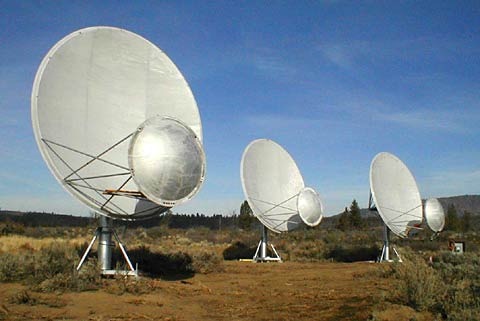SETI begins looking for alien life again. Restarts Allen Telescope Array

The Search for Extra-Terrestrial Intelligence (SETI), has re-launched Allen Telescope Array operations in California in order to continue their search for alien life forms.
Due to a lack of funding the project was stopped in April; but public donations and a huge investment from the U.S. Air Force has meant they can continue their research. This comes at rather convenient timing, as NASA announced the discovery of 1,000 new potential life-supporting planets via its Kepler space telescope. This gives the guys at SETI 2,326 potential hiding spots to play a game of Extra-Terrestrial "Where's Wally" ('Waldo' for our American readers), allowing for more informed decisions as to what planets to focus their search on. Jill Tarter, Director of the Centre for SETI Research at the SETI Institute comments:
For the first time, we can point our telescopes at stars, and know that those stars actually host planetary systems – including at least one that begins to approximate an Earth analog in the habitable zone around its host star. That’s the type of world that might be home to a civilization capable of building radio transmitters.
The Allen Telescope Array is a unique structure in the field of radio telescopics, consisting of multiple smaller dishes instead of the one large dish that you'd normally find, making for something that's easily expandable. The higher the amount of dishes, the more sensitive the array, and this isn't custom-built apparatus: simply the satellites that you'd see broadcasting TV. The Air Force said that their investment in SETI is a "formal assessment of the instrument's utility for Space Situational Awareness." Simply put, it's used to check that the path of any space travel is clear of orbiting objects.
Follow ATA observations on SETIStars.org. We're going to go watch X-Files: this has put us in the mood for it.
Source: SETI,